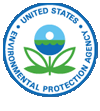 EPA Issues Annual Report on Chemicals Released
EPA Issues Annual Report on Chemicals Released
Into Land, Air and Water in New York
Finch Paper, Eastman Kodak and Danskammer Power Plant
Top the List of NY Polluters
The annual U.S. Environmental Protection Agency (EPA) report on the amount of toxic chemicals released to the land, air and water by industrial facilities in New York State in 2009 showed a decrease over the past reporting year. The Toxics Release Inventory report issued this week by EPA covered 646 New York facilities that are required to report their releases to the Agency. Total releases to land, air and water by these facilities decreased by nearly 26% from 24.7 million pounds in 2008 to 18.3 million pounds in 2009.
EPA added 16 chemicals to the list of reportable toxic chemicals in November 2010. These chemicals are reasonably anticipated to be human carcinogens, and represent the largest chemical expansion of the reporting program in a decade. Data on the new chemicals will be reported by facilities on July 1, 2012.
Facilities must report their chemical disposals and releases by July 1 of each year. This year, EPA made a preliminary set of data for 2009 available in July, the same month as the data was collected. This is the earliest release of TRI data to the public ever.
"This report informs the public and policymakers about the types of pollution in our communities and where they come from," said Judith Enck, EPA Regional Administrator. "It is an invaluable tool that we all can use to better understand pollution problems and to take action to protect health and their local environment. The data is a reminder that we need to work toward preventing pollution at the source."
Since 1988, Toxic Release Inventory data has been provided to the public annually to help people learn more about the chemicals present in their local environment and gauge environmental trends over time. The inventory contains the most comprehensive information about chemicals released into the environment reported annually by certain industries and federal facilities. These facilities have permits issued under federal regulations that set strict limits on the amount of chemicals that they are allowed to release into the air, water or land. Many are required to install and maintain pollution controls.
Nationally, over 20,000 facilities reported on approximately 650 chemicals for calendar year 2009. The Toxic Release Inventory provides information to the public on which facilities are increasing and decreasing their output of toxic chemicals and compounds. With improvements in EPA's system, the vast majority of facilities now report data electronically and detailed information about specific facilities is more readily accessible to the public.
The reporting facilities in New York State with the largest 2009 on-site releases into the environment in 2009 are (from highest to lowest) in pounds:
|
Name |
City |
2009 Total On-site Releases |
2008 Total On-site Releases |
2008-2009 Change |
2008-2009 % Change | |
|
|
FINCH PAPER LLC |
GLENS FALLS |
3,797,179 |
2,076,935 |
1,720,244 |
82.83 |
|
|
EASTMAN KODAK CO EASTMAN BUSINESS PARK |
ROCHESTER |
2,835,630 |
2,487,775 |
347,855 |
13.98 |
|
|
DANSKAMMER GENERATING FACILITY |
NEWBURGH |
1,572,426 |
1,640,496 |
-68,071 |
-4.15 |
|
|
ANHEUSER-BUSCH INC |
BALDWINSVILLE |
1,425,808 |
1,751,985 |
-326,177 |
-18.62 |
|
|
IBM CORP |
HOPEWELL JUNCTION |
892,978 |
1,059,431 |
-166,453 |
-15.71 |
|
|
CWM CHEMICAL SERVICES LLC |
MODEL CITY |
756,285 |
1,280,409 |
-524,124 |
-40.93 |
|
|
INTERNATIONAL PAPER |
TICONDEROGA |
490,656 |
590,496 |
-99,840 |
-16.91 |
|
|
ALCOA INC |
MASSENA |
455,813 |
530,589 |
-74,776 |
-14.09 |
|
|
LAFARGE BUILDING MATERIALS INC |
RAVENA |
445,519 |
264,815 |
180,704 |
68.24 |
|
|
3M CO - TONAWANDA |
TONAWANDA |
379,000 |
346,000 |
33,000 |
9.54 |
For a full list of reporting NY facilities, go to: http://www.epa.gov/tri .
To view an area fact sheet, visit: http://www.epa.gov/triexplorer/statefactsheet.htm .
Follow EPA Region 2 on Twitter at http://twitter.com/eparegion2 and visit our Facebook page, http://www.facebook.com/eparegion2 .
